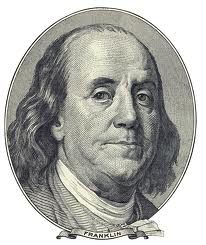Cocaine is an alkaloid found in leaves of the South American shrub Erythroxylon coca. The drug induces a sense of exhilaration in the user primarily by blocking the reuptake of the neurotransmitter dopamine.
In pre-Columbian times, the coca leaf was officially reserved for Inca royalty. The natives used coca for mystical, religious, social, nutritional and medicinal purposes. Returning Spanish conquistadores introduced coca to Europe.
The active ingredient of the coca plant was first isolated in the West by the German chemist Friedrich Gaedcke in 1855; he named it "Erythroxyline". Albert Niemann described an improved purification process for his PhD; he named it "cocaine". Sigmund Freud, an early enthusiast, described cocaine as a magical drug. Robert Louis Stephenson wrote The Strange Case of Dr Jekyll and Mr. Hyde during a six-day cocaine-binge. Intrepid polar adventurer Ernest Shackleton explored Antarctica propelled by cocaine tablets.
Doctors dispensed cocaine as an antidote to morphine addiction. Unfortunately, some of their patients made a habit of combining both.
Cocaine was soon sold over-the-counter. Until 1916, cocaine was widely used in tonics, toothache cures and patent medicines, in coca cigarettes "guaranteed to lift depression", and in chocolate cocaine tablets.
When combined with alcohol, the cocaine alkaloid yields a further potently reinforcing compound, now known to be cocaethylene. Thus cocaine was a popular ingredient in wines.
Coca-cola was introduced in 1886 as "a valuable brain-tonic and cure for all nervous afflictions". Until 1903, a typical serving contained around 60mg of cocaine.
Effects of "Crack" on the Individual & Society
Sensation-hungry thrill-seekers have long sought the ultimate "rush". Normally, only intravenous administration could deliver the more potent hit they have been seeking. Yet there are strong cultural prejudices against injecting recreational drugs. So a smokeable form was developed.
Since the hydrochloride salt decomposes at the temperature required to vaporize it, cocaine is converted to crack. Ordinary cocaine hydrochloride is concentrated by heating the drug in a solution of baking soda until the water evaporates.
The initial short-lived euphoria of crack is followed by a "crash". This involves anxiety, depression, irritability, extreme fatigue and possibly paranoia. Physical health may deteriorate. An intense craving for more cocaine develops. In heavy users, compulsive and repetitive patterns of behavior may occur, so may tactile hallucinations of insects crawling underneath the skin.
The social consequences of heavy cocaine use can be equally unpleasant. Addicts are likely to alienate family and friends. They tend to become isolated and suspicious. Most of their money and time is spent thinking about how to get more of the drug. The compulsion may become utterly obsessive. During a "mission", essentially a 3-4 day crack-binge, users may consume up to 50 rocks a day. To obtain more, crack addicts will often lie, cheat, steal and commit crimes of violence. Once-loved partners and children may be callously cast aside. Whole communities can be disrupted by crack-abuse.
More Fact about Cocaine/Crack
- Cocaine is one of the oldest known drugs but became popular in the last two decades as the ‘drug of the 80s and 90s’. It is a powerfully addictive stimulant that directly affects the brain. However, ordinary people know very little facts about cocaine.
- Facts about cocaine are as follows:
- It is a drug extracted from the leaves of the coca plant that has a strong stimulant effect on the central nervous system of the body.
- In appearance it is a crystalline powder, white in color. On the street it is mixed with vitamins, cornstarch, flour or sugar and looks like a small rock with an off-white or pink color.
- On the street cocaine is known by a variety of names such as, Coke, Dust, Toot, Line, Nose Candy, Powder, Girl, White Pony, Flake, C, The Lady, Cain, Neurocain, Rock, and Crack.
- Cocaine is sniffed, snorted or smoked and in the deeply addict stage, injected.
- Nearly 1 percent of Americans currently use cocaine, and they come from all social and economic levels. It is the second most popular drug in the US.
- The drug gives the user a strong sense of exhilaration. Users generally feel highly energetic and euphoric, are alert and have a sense of invincibility. The effects usually last for about two hours followed by a feeling of intense depression, anxiety and paranoia. This is accompanied by loss of appetite.
- Cocaine is an extremely potent and highly dangerous drug. It has several adverse effects that include insomnia, blurred vision, high anxiety, irritability and loss of appetite. Users are susceptible to cardiac arrest or respiratory failure preceded by seizures.
Video about Cocaine
How Drugs Work 3/3 - Cocaine (BBC Three)
Eric Clapton - Cocaine
Cocaine Mafia: Vanguard
Pablo Escobar - King of Cocaine
How Cocaine Is Made
How Does Cocaine Affect The Brain? - How Drugs Work, Cocaine, Preview - BBC Three
Colombia mulls decriminalising cocaine
source: drug-testing-forum.com;
Any language
コカインについての興味深い事実 // Faits intéressants au sujet de la cocaïne // Ενδιαφέροντα δεδομένα για κοκαΐνη // Numeri interessanti di cocaina // 有趣的事實可卡因 // 코카인에 대한 흥미로운 사실 // Interessante Fakten über Kokain // Fatos interessantes sobre Cocaína // Datos interesantes sobre la cocaína














